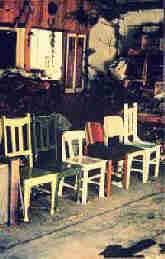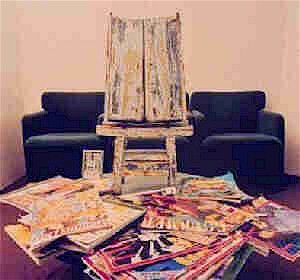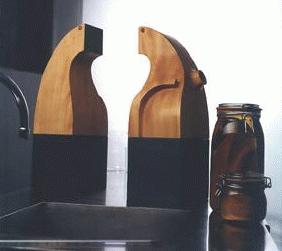| The wood-worker |
|
|
|
While most patients would choose non-invasive techniques well before an incision by even the most supple `surgeon's hands', `hand crafted' does not seem to have lost any of its value in woodwork.
 | Outside Martin Corbin's workshop, a series of chairs stand waiting for surgery. |
| Martin Corbin (Will I be able to play the piano?) explores the lighter side of this relationship: his reconstruction of an abandoned chair makes woodwork seem a life-giving exercise. The final product on waiting room table, with photo of original chair framed in its own wood. |
 |
 |
For Helmut Lueckenhausen (Aus dem Wunderkammer: from the cabinet of wonders), on the other hand, the particular use of Huon pine grants solid timber the kind of sacred fragility normally associated with human flesh. In a family scene, two parental forms stand together with their offspring preserved in jars of olive oil. |